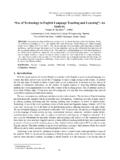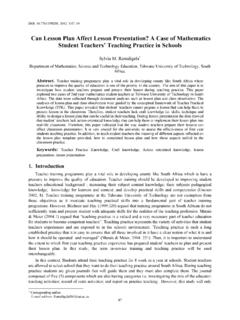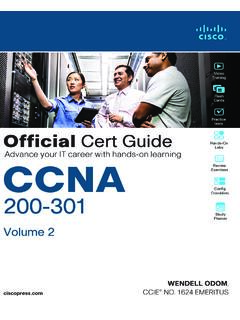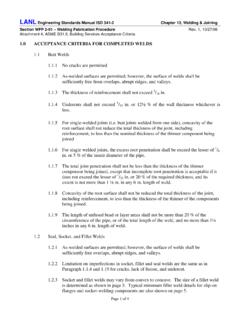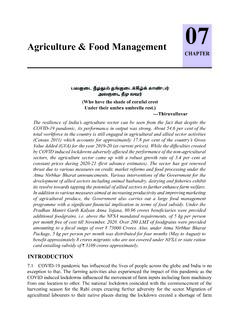Transcription of Effective Strategic Action: From Formulation to …
1 Effective Strategic action : From Formulation to implementation Michaela Blahov Centre for Applied Economic Research, Faculty of Management and Economics Tomas Bata University in Zl n Zl n, Czech Republic Adriana Kn pkov Department of Finance and Accounting, Faculty of Management and Economics Tomas Bata University in Zl n Zl n, Czech Republic Abstract - Formulation and implementation of business strategies is often connected with CEOs, corporate heads of strategy or shareholders. A brilliant strategy may put a company on the competitive map and increase its performance. Unfortunately, most companies struggle with implementation . Enterprises generally fail at execution because they go straight to structural reorganization (which produces only short-term gains) and neglect the most powerful drivers of effectiveness decision rights and information flow. What is the way to implement the business strategy effectively and which obstacles can harm the successful implementation ?
2 Keywords strategy, Formulation , implementation , failure, performance I. INTRODUCTION Formulating a strategy has always been easier than implementing it correctly. According to Davenport [1] creating a brilliant strategy is nothing compared to executing it successfully. It has always been much easier to create a strategy document than to get employees to abide by it. Many employees do not even know the details of strategies. Plans by senior management are neither attended to nor executed. Performance expectations are not met. Execution is critical to success, Hrebiniak [2] notes. Execution represents a disciplined process or a logical set of connected activities that enables an organization to take a strategy and make it work. Without a careful, planned approach to execution, Strategic goals cannot be attained. Developing such a logical approach, however, represents a formidable challenge to management.
3 A host of factors, including politics, inertia, and resistance to change, routinely can get in the way of execution success. Despite its importance, execution is often handled poorly by many organizations. There still are countless cases of good plans going awry because of substandard execution efforts. This raises some important question. If execution is central to success, why don t more organizations develop a disciplined approach to it? Why don t companies spend time developing and perfecting processes that help them achieve important Strategic outcomes? Why can t more companies execute or implement strategies well and reap the benefits of those efforts? The simple answer is that execution is extremely difficult. There are formidable roadblocks or hurdles that get in the way of the execution process and seriously injure the implementation of strategy. The road to successful execution is full of potholes that must be negotiated for execution success.
4 Noble [3] thinks that a myriad of factors can potentially affect the process by which Strategic plans are turned into organizational action . Unlike strategy Formulation , strategy implementation is often seen as something of a craft, rather than a science, and its research history has previously been described as fragmented and eclectic. It is thus not surprising that, after a comprehensive strategy or single Strategic decision has been formulated, significant difficulties usually arise during the subsequent implementation process. The best formulated strategies may fail to produce superior performance for the firm if they are not successfully implemented. It is obvious that the biggest challenge for today s organizations is not Formulation but rather strategy implementation However, many companies fail in performance enhancement because they fail in implementing strategies into action .
5 How can they overcome these obstacles in order to help firms leaders to make necessary changes in the process of successful execution and strategy implementation ? II. STRATEGY AS action Strategy is about making series of decisions that drive corporate action under specific coupling with company s environment and context. Because decisions are actions, so the strategy itself is action , not just a description of action , according to Zelen [4]. In the area of traditional strategy, descriptions (information) have replaced action (knowledge), talk has replaced walk. Strategy is what company does, and what company does is its strategy. One cannot run a company just on descriptions and framed mission statements. The role of customers is crucial: the customer shapes strategy and triggers corporate action . Without respecting the customer there is no viable strategy.
6 Customers, not corporate executives, determine if products and services add value, provide quality, are innovative or offer tradeoffs-free satisfaction. action and description of action are two very different domains and only rarely the two meet. Assorted corporate mission and vision statements are not strategy and have little to do with strategy. They are just descriptions of intentions, desires and plans just words substituted for action . This gap between knowing what to do and actually doing it can be 612010 International Conference on Economics, Business and Management IPEDR (2011) (2011) IAC S IT Press, Manila, Philippinesexcruciatingly real and it has been widening and getting worse even since the onset of the information era. Zelen [4] provides a summary of the emerging view of strategy: Any core competency or competitive advantage is temporary. Effective strategy is based on a continuous search for new advantage and production of new competencies.
7 Strategy emerges from a series of interrelated decisions aiming towards reducing or eliminating tradeoffs conflict. Strategy is action , not a description of action , what a company does, not what it says, is its strategy. All action takes places in the present, not in the future, not in the past; the rest are descriptions. Current organization reflects current portfolio of resources. Strategy transforms resource portfolio into a better resource portfolio. Organization and strategy are interdependent and mutually co-determinant. Organization is a self-renewing cycle of basic processes; structure is a time-spatial snapshot of the underlying organizational process: organization determines structure, not vice versa. The relationship between structure and strategy is irrelevant. Corporate strategy must involve changes in business model, not just in products and services; it must allow continuous reinvention of itself as a company and business.
8 Corporate resources are not given, but must be continually designed and re-designed towards maximization of added value for both business and its customers. Accumulated knowledge and past experience is the platform for change, not information of future intent, mission or vision. (Anything that can be framed and hanged on the wall is not strategy.) Added value is a better measure of Strategic success than profit maximization. All employees and corporate teams, units and departments must add value to justify their earnings. Customer is the driver of strategy and the validating source and measure of quality, innovation and knowledge. Customer does not prefer tradeoffs: he wants it all. Markets are continually and unpredictably changing and shifting. Long-term strategy, based not on forecast, but rooted in foresight, brings forth the necessary consistency of purpose. New products, services and business models are being launched and tested at steady and predictable pace, regardless the boom or bust circumstances.
9 Doing the work of crisis without the crisis is a new corporate calling. Strategy cannot come from top-down in the form of descriptions and declarations. Neither can action percolate from bottom-up. Strategy emerges from the action cycle of Customer-Innovation-Processes-Finance. CIPF should be the strategy of any business; only the measures of performance differentiate individual corporate strategies. Foresighting of trends, organizational adjustment and optimal conditions for CIPF-cycle functioning are the main charges of corporate leadership and executive management. Corporate strategy is not assembled like a Lego piecewise into a unified whole. Rather, strategy is grown and nurtured into its existence from the past action , not backwards from the future like a living organism, not like a contrived machine. The above mentioned summary confirms that strategy as a competent and purposeful action will impress both competitors and customers.
10 Strategy is about what you do, not about what you say you do. Strategy is about action , not about description of action . Strategy is about doing, not about talking. All corporations have strategy, whether they know it or not: it is embedded in their doing. Strategy is what you do. What you do is your strategy. Your action should be stronger and more reliable than your words. III. Formulation OF COMPETITIVE STRATEGY Among managers who make strategy and researchers who study it, fierce battles have been fought over the right way to discover a strategy. In one corner stand advocates of analysis, deliberation, and planning: Managers should study the competitive forces in their environment, deduce a set of choices that helps the firm confront those forces, and then implement the choices. In the opposite corner are those who support what s termed an emergent approach: Managers should try things out, learn from experience, adjust, and gradually craft a strategy.
